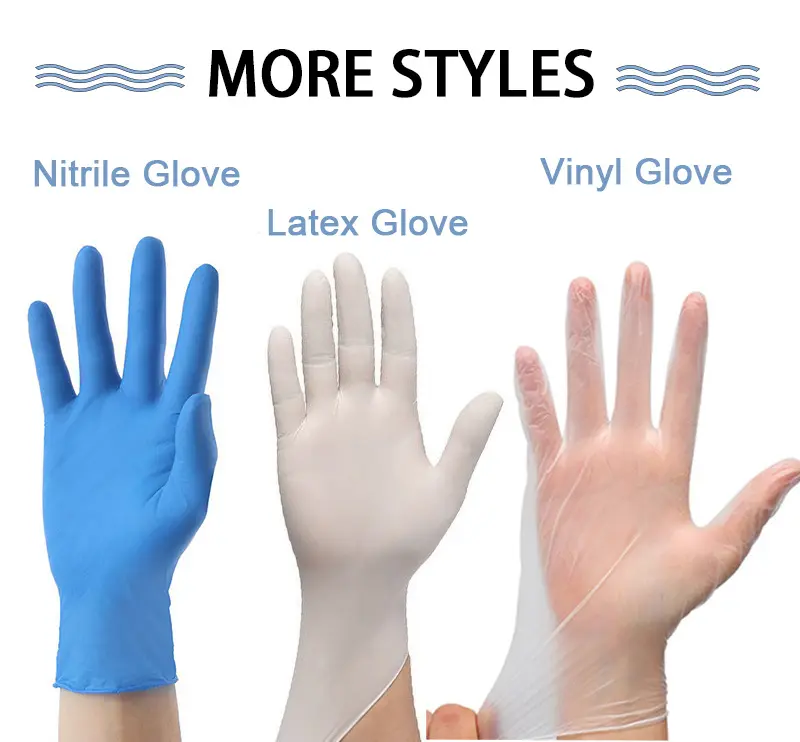PE Glove
1. Polyvinyl Chloride (PVC) Gloves
PVC gloves are primarily made from polyvinyl chloride, with other chemical additives as supplementary materials, offering anti-static properties.
Advantages:
Easy to wear: Smooth surface with moderate flexibility, making them more convenient and durable than PE gloves.
Water and oil resistance: Excellent waterproof and oil-proof performance, widely used in kitchens, salons, and the food service industry to protect hands from moisture and grease.
Disadvantages:
Poor biodegradability: Low environmental friendliness, causing pollution.
Low elasticity: Overstretching during wear may compromise performance and reduce dexterity.
2. Nitrile Gloves
Nitrile gloves are made from nitrile rubber (NBR) and serve as an alternative for those allergic to latex. Their material advantages make them widely applicable in industrial and daily use.
Advantages:
Hypoallergenic: Free from latex proteins, making them safe for users with latex allergies. Commonly used in medical, food processing, mechanical repair, and cleaning industries.
High puncture resistance: Tough material protects hands from punctures or injuries during mechanical tasks.
Chemical resistance: Effectively blocks oils, acids, alkalis, and other corrosive substances.
Durability: More wear-resistant than other disposable gloves, reducing the need for frequent replacements.
Disadvantages:
Lower elasticity: Less form-fitting than latex gloves, limiting precision in surgical or delicate operations.
Higher cost: Complex production and material expenses result in a higher price compared to PVC or PE gloves.
3. Latex Gloves
Made from natural rubber sourced mainly from Southeast Asia (e.g., Thailand, Malaysia), latex gloves were among the earliest disposable gloves and remain widely used.
Advantages:
Superior elasticity: Snug fit ideal for surgical procedures or precision tasks like electronics handling.
Tear-resistant: High elasticity reduces the risk of tearing, extending usability.
Tactile sensitivity: Excellent touch precision, favored in art restoration, cosmetics, and hairdressing.
Disadvantages:
Allergy risk: Natural rubber contains latex proteins, triggering allergic reactions in some individuals.
Poor oil resistance: Easily penetrated and damaged by oils, unsuitable for greasy environments.
4. Polyethylene (PE) Gloves
PE gloves, a type of plastic glove, are commonly used in food service and processing.
Advantages:
Low cost: The most economical option for large-scale, low-risk applications like food handling or basic cleaning.
Lightweight and transparent: Thin and clear, allowing easy visibility of hand movements while maintaining a neat appearance.
Safe for food contact: Chemically stable with minimal skin irritation.
Disadvantages:
Zero elasticity: Lacks flexibility, impairing dexterity.
Poor protection: Thin material prone to tearing, offering minimal hand protection.





